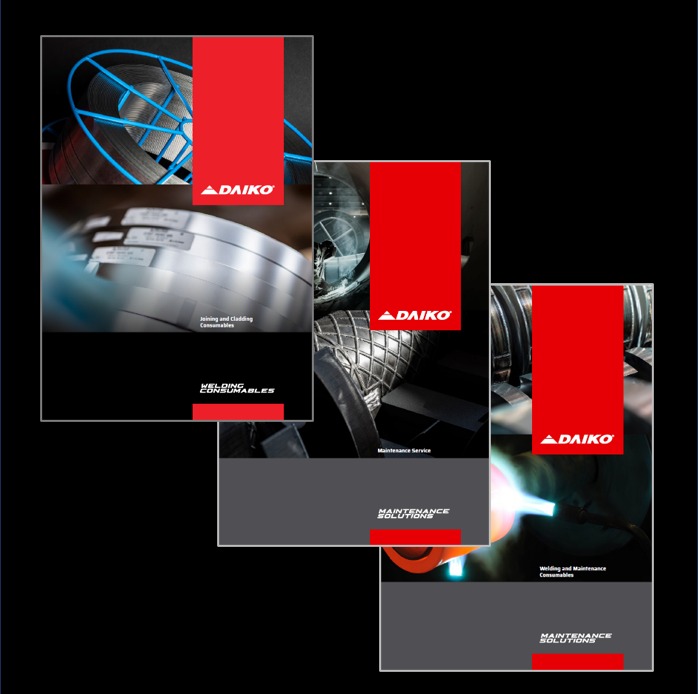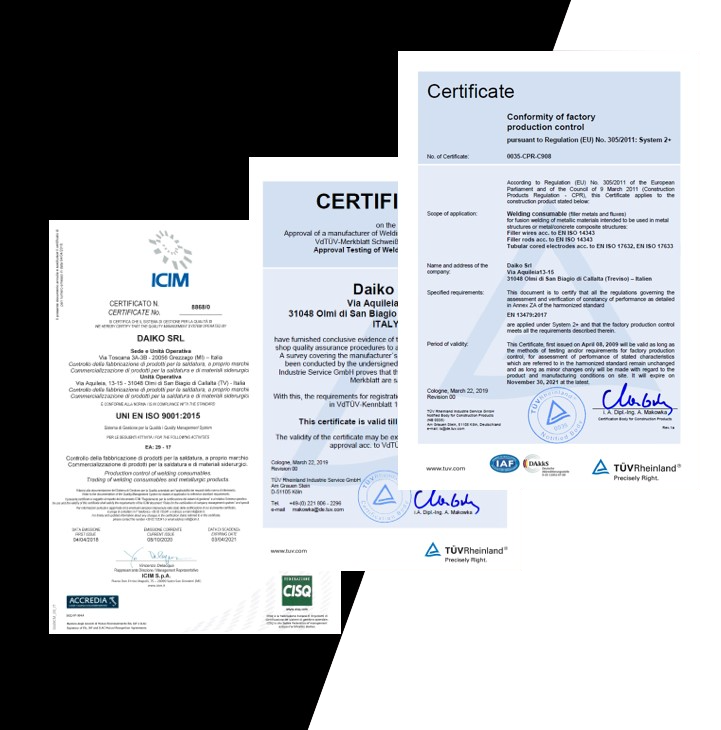- Home
- >
- All DAIKO products
- >
- FERRITIC - MARTENSITIC STAINLESS STEEL
- >
- 410NiMo
410NiMo
Application
Martensitic stainless steel with high strength (>760MPa) exhibits superior resistance to corrosion, hydro-cavitation, sulphide-induced stress corrosion cracking (SCC), and commendable sub-zero toughness in comparison to plain 12%Cr steels (e.g., type 410/CA15). The weld metal of this variant significantly surpasses the strength of the equivalent parent material and demonstrates exceptional resistance to softening during post-weld heat treatment (PWHT). These attributes can be advantageous when welding martensitic precipitation-hardening alloys, provided the corrosion conditions align with the compatibility of lower alloy weld metal. An additional benefit is the feasibility of a single PWHT at 450-620°C for tempering. These consumables find application not only in welding but also in overlaying mild and C-Mn steels. The 13%Cr-4%Ni alloys, available in cast or forged forms, play a vital role in various components such as hydraulic turbines, valve bodies, pump bowls, compressor cones, impellers, and high-pressure pipes. These applications span across power generation, offshore oil, and the chemical and petrochemical industries.
Alloy Type
12%Cr-4.5%Ni-0.5%Mo (410NiMo) soft martensitic
alloy.
Microstructure
In the PWHT condition the microstructure consists of
tempered martensite with some retained austenite.
Materials
EN W.Nr.: 1.4313 (X3CrNiMo13-4).
ASTM: F6NM, CA6NM.
ANFOR: Z6 CND 1304-M.
UNS: S41500.
Welding & PWHT
It is recommended to maintain a preheat-interpass temperature range of 100-200°C during welding to facilitate martensite transformation. Cooling the components to room temperature before Post Weld Heat Treatment (PWHT) is advised. Achieving a hardness level of <23HRc, as specified by NACE MR0175 for maximum resistance to sulphide-induced Stress Corrosion Cracking (SCC) in sour oil conditions, can be challenging. This is due to the inherent resistance of weld metal and Heat-Affected Zone (HAZ) to softening during PWHT. To address this, a double temper for 5-10 hours is deemed necessary. Common practice involves a two-step tempering process: 675°C/10h followed by 605ºC/10h with an intermediate air cool to ambient temperature. Recent research suggests that optimizing the tempering process involves temperatures of 620°C ÷ 650ºC, with intermediate air cooling to ambient or lower being an essential step. Another approach proposes elevating the first PWHT cycle for a full austenitization anneal at 770°C/2h before the final temper. It is noteworthy that distortion control may become more critical in this scenario. In the case of the Supercore 410NiMo flux-cored wire, reducing the hardness to 23HRC has proven challenging, regardless of the PWHT applied. When considering 410NiMo consumables for welding plain 12Cr martensitic stainless steels like type 410 or CA15, it is advisable not to exceed a PWHT temperature of about 650°C, unless a second temper at 590-620°C is applied.
Products of the line 410NiMo
| Product name | Process | AWS specifications | EN ISO specifications | |
| DAIKOWT 410NiMo | GTAW |
AWS A5.9
ER410NiMo |
EN ISO 14343-A
W 13 4 |
|
| G-TECH 410NiMoB | SMAW |
AWS A5.4
E410NiMo-15 |
EN ISO 3581-A
E 13 4 B 42 |
|
| G-TECH 410NiMo | SMAW |
AWS A5.4
E410NiMo-16 |
EN ISO 3581-A
E 13 4 R 32 |
|
| DAIKOFCW 4140 N-L-H | FCAW |
AWS A5.22
(E410NiMo) |
- | |
| DAIKOFCW 410NiMo | FCAW |
AWS A5.22
E410NiMoT1-1/4 |
- | |
| DAIKOMCW 410NiMo | FCAW |
AWS A5.22
EC410NiMo |
- | |
| DAIKOWM 410NiMo | GMAW |
AWS A5.9
ER410NiMo |
EN ISO 14343-A
G 13 4 |
|
| DAIKOWS 410NiMo | SAW |
AWS A5.9
ER410NiMo |
EN ISO 14343-A
S 13 4 |


